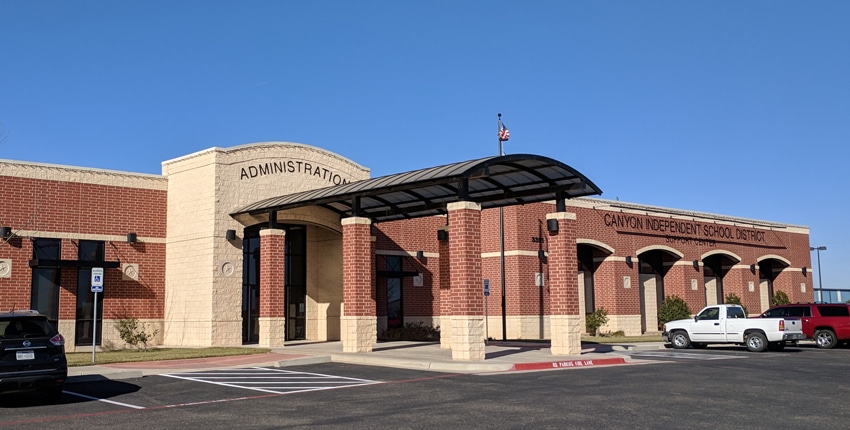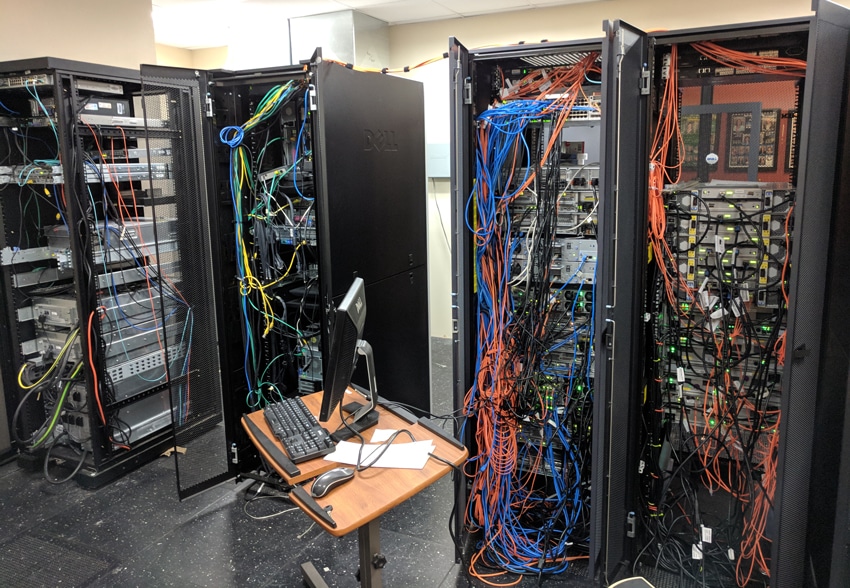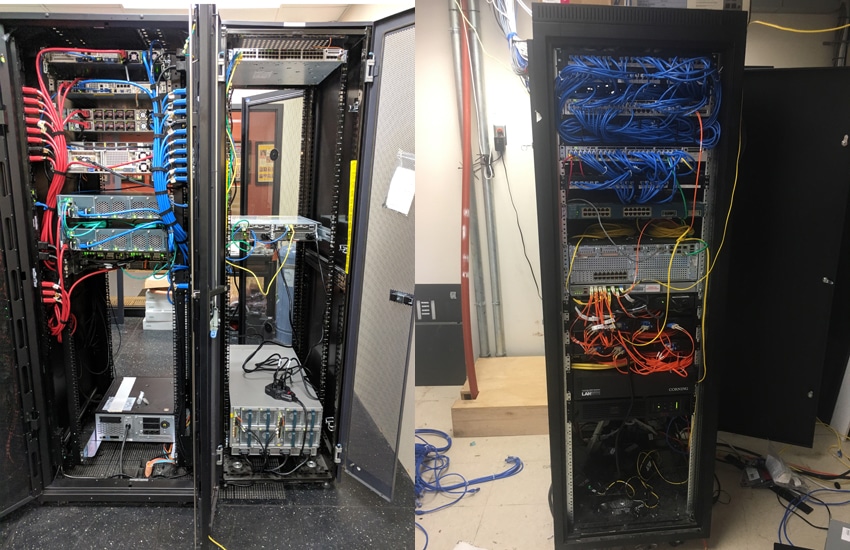![]() At StorageReview we frequently mention large enterprises and small to medium markets without elaborating on them to any real degree. The reason for this is that these terms can be applied to a wide range of businesses and organizations. One that would definitely fit in the SMB group would be a school. For this success story we look at Canyon Independent School District in the Texas Panhandle and how they have migrated to new gear over the last year. A special guest author, Michael Keough, has written this piece.
At StorageReview we frequently mention large enterprises and small to medium markets without elaborating on them to any real degree. The reason for this is that these terms can be applied to a wide range of businesses and organizations. One that would definitely fit in the SMB group would be a school. For this success story we look at Canyon Independent School District in the Texas Panhandle and how they have migrated to new gear over the last year. A special guest author, Michael Keough, has written this piece.
At StorageReview we frequently mention large enterprises and small to medium markets without elaborating on them to any real degree. The reason for this is that these terms can be applied to a wide range of businesses and organizations. One that would definitely fit in the SMB group would be a school. For this success story we look at Canyon Independent School District in the Texas Panhandle and how they have migrated to new gear over the last year. A special guest author, Michael Keough, has written this piece.

Canyon ISD is a rural, but rapidly growing, school district in the Texas Panhandle. We have 15 Schools and are currently building a new Intermediate school scheduled to go live in August. With roughly 10,000 students and over 1500 employees, we have 700 square miles of potential growth as opposed to our larger neighbor (Amarillo ISD) with only 70 square miles of growth potential. The district is extremely forward thinking, with a strong emphasis on extending learning outside the classroom. The Canyon ISD vision statement is "Empowering Lifelong Success" and as district employees, we take this very seriously.
Over the last year at Canyon ISD, my team and I have been working very hard to update our infrastructure by replacing entire campus networks, desktop deployments, and now our data center.

Much of our equipment ranges from 5-15 years old, so we were very much in need of a solid refresh and a structured refresh cycle in order to prevent this situation in the future. I was hired Jan 1 2017, and the refresh has been my number 1 focus. In fact we have cut hundreds of thousands of dollars out of the OPEX cost for technology by:
- Renegotiating Cisco Contracts / Vendors (We moved to NetSync and they have been incredible)
- Adjusting SmartNet contracts (decreased $28k)
- Re-Negotiating Microsoft Contracts
- Replacing our Traditional Servers and SANs with the new UCS/NetApp (saving $80k/y in IBM maintenance cost)
This isn't to mention the energy savings we will see after the new servers is installed. We currently have 4 completely full racks with the IBM gear. 3 of those racks are server and compute and 1 full rack is storage. The servers will be consolidated to 3 UCS blades which also lowered our VM (per cpu) licensing from 16 to 6 (2 per blade). The rack of 10/15K drives will move to a 2U NetApp AFF A200 and will only fill half that appliance while providing more storage and speed.
With our IBM system, we have been doing incremental backups to tape nightly and full backups weekly. We take those backups off site every day. With our new system, we are completely doing away with tape and implementing an off site DR using a NetApp E2812 (non business continuity, just Veeam backup) which will run over a 10GbE connection and be housed at one of our high schools.
I can't stress enough what an outstanding Partner NetSync has been in the process of our conversion. They are handling it from a complete white glove approach and it has been one of the best parts of this decision. The engineers are absolutely top notch!

We have partnered with organizations such as NetSync, Dell, Pantex, and Bell Helicopter to provide opportunities and technology for students in ways I believe are ground breaking. A few examples include:
- iConnect
- District wide digital learning initiative. All students from 9-12 have ChromeBook laptops that they use during the day and take home at night.
- Lower Grades have ChromeBook devices in the classroom on COWs (Cart On Wheels)
- iConnect student teams at the High Schools, run our program. They fix machines, image them, facilitate customer support with other students and staff members, run a VR unit in the library, and assist with teacher professional development days by actually preparing and delivering instruction on technology to district staff members.
- Students are both Google and Dell Technician certified
- CodeBreaker
- A scavenger hunt and code breaking / deciphering challenge for high school students http://keoflex.com/skynet
- Manufacturing initiative
- The district will be partnering with Bell Helicopter and Pantex to start a manufacturing initiative.
- We believe that the more choices a student has when they leave high school the better equipped they are for a bright future.
- We want graduation to look like a buffet of options for each student so while we encourage high education in college we also believe some students will be better served pursuing technical or manufacturing pursuits, and we want them prepared for that.
- Student Interviews
- Every high school student will have conducted a professional interview with a District staff member at least once, but usually twice before graduation. We see too many students who get into college and do horribly in their first interview, so we help them through the process before it becomes a reality for them.
- Pro Internships
- I personally have 2 students in my office that come 3 times a week for 2 hours a day
- These students function just like one of my employees. In fact I have them on a project where they are programming a district wide Bully and self harm reporting system. This is a huge project and the students are managing 95% of it.
- Revolutionary Technology
- With our new Vision 2020 push, the district recognizes the need to have modern technology in a consistent refresh cycle. We have also found that for a CAPEX investment we can save tremendous amounts of money over time. For instance, we currently have a Hub and Spoke Leased lit Fiber WAN, but are researching a resilient dark fiber ring for the next year. This would be a very high CAPEX cost, but would literally save millions over the course of the 20 year lease. The same is true with our server solution. We pay over 80k in maintenance on the existing IBM servers and over 10k per year replacing or adding hardware. By spending the additional money to forklift the entire system and move to a converged NetApp / Cisco UCS solution we will not only save a huge amount of money of the OPEX, but drastically reduce the energy cost of running the data center. I believe it is critical that we look to 2,3,5, and 10 years down the road and not just keep operations moving because we have budget now. The new technology will ultimately thin our recurring budget while providing a much more robust solution.
Infrastructure in schools is often one of the most under-funded and least visible elements until it starts having problems that is. We were fortunate to have networking and server equipment maintain 8-15 years, but we really pushed the limits. In fact, while doing the conversion to newer equipment, we lost 3 servers and the Cisco wireless controller. This says a lot about the quality of Cisco's product, but also brings home the importance to implementing strong refresh cycles and building awareness among constituents and decisions makers well in advance.

